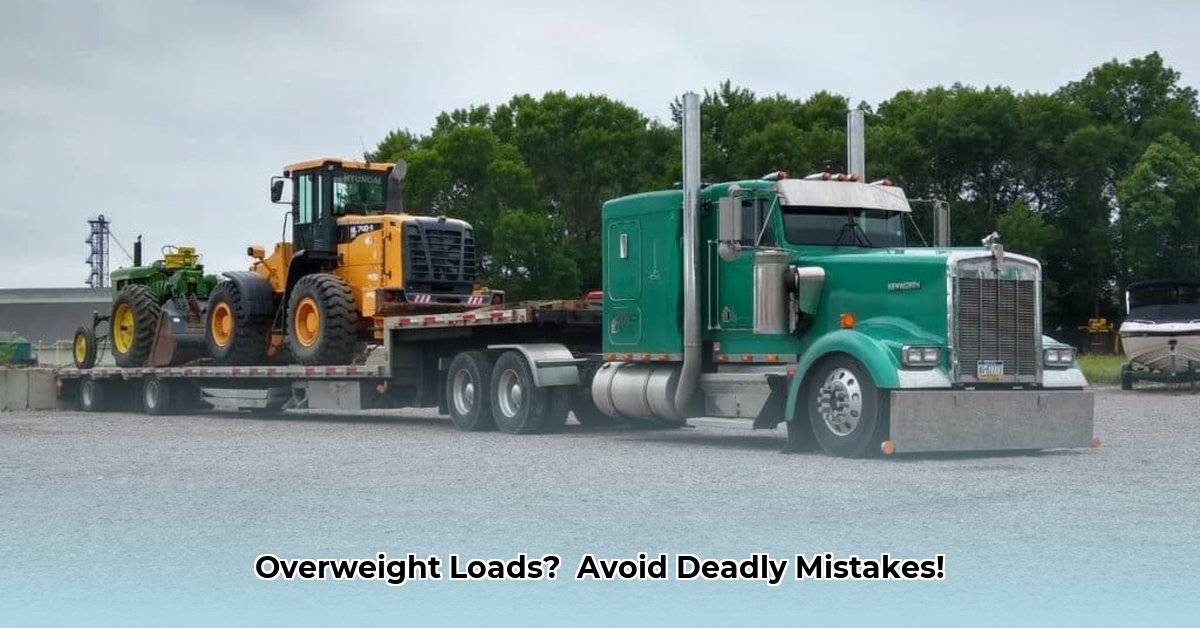
Safe and legal operation of a tractor-trailer hinges on understanding and adhering to weight limits. This guide provides a comprehensive overview of weight regulations, inspection procedures, and available technologies to ensure safe and compliant hauling. For more detailed information on GVW, check out this helpful resource: GVW information.
Understanding Gross Vehicle Weight (GVW)
Gross Vehicle Weight (GVW) represents the total weight of your tractor, trailer, and cargo. Staying within your GVW is crucial. Exceeding it is illegal and significantly increases the risk of accidents, potentially causing damage to infrastructure and harming others. Think of it like this: a boat overloaded with passengers is unstable and unsafe; the same principle applies to an overloaded truck.
Axle Configuration and Weight Distribution
Axle configuration significantly impacts weight limits. More axles provide better weight distribution, allowing for higher GVW. The spacing of your axles influences how weight is distributed, impacting legal limits and stability. Incorrect weight distribution can lead to unsafe handling and potential accidents. Understanding your specific axle configuration and its corresponding weight limits is paramount.
Regional Variations in Weight Limits
Weight limits vary substantially by region, country, state, and even specific roadways. What's legal in one area might be illegal in another. Always research the specific regulations for your entire route. Failure to comply with local regulations can result in significant fines and legal penalties. Consider using route planning software that accounts for these variations.
- United States: Weight limits vary considerably by state. Many states have a maximum GVW of 80,000 lbs, but this can be lower depending on the number of axles and specific routes. Consult state and local transportation agencies for precise information.
- Canada: Provincial regulations govern weight limits, with variations between provinces. Higher limits are sometimes permitted for specific routes or configurations. Check individual provincial regulations for details.
- International Trucking: Weight limits vary dramatically across international borders. Thorough research of regulations in each country and region through which you'll be traveling is essential.
Pre-Trip Inspection Checklist: A Step-by-Step Guide
A comprehensive pre-trip inspection is non-negotiable for safe and legal operation. This reduces the risk of overweight violations and ensures the safety of your cargo and others on the road.
- Weigh Your Rig: Utilize a certified scale to determine the precise weight of your fully loaded tractor-trailer. Inaccurate estimates should be avoided. Accurate weighing prevents overweight violations.
- Assess Weight Distribution: Ensure your cargo is evenly distributed across all axles. Uneven weight distribution compromises stability and handling.
- Secure Your Cargo: Properly secure all cargo to prevent shifting during transit. Improper securing can lead to shifting loads, instability, and accidents.
- Inspect Tires and Brakes: Verify that all tires are adequately inflated and your braking system is fully functional. Proper tire inflation and braking functionality are essential for safe stopping, particularly with heavier loads.
- Verify Route Compliance: Before departure, confirm that your selected route complies with all applicable weight restrictions. Route planning software can assist in this.
Consequences of Overweight Violations
Overweight violations carry substantial consequences beyond financial penalties. Fines can be considerable, and you may face delays due to unloading requirements. Moreover, serious safety risks are associated with overweight vehicles, significantly increasing accident likelihood. The potential damage to roads and bridges also carries far-reaching implications.
Resources for Weight Limit Information
Reliable information is readily available from numerous sources.
- Government Agencies: Consult the relevant transportation agencies in each jurisdiction. For the United States, the Federal Motor Carrier Safety Administration (FMCSA) (https://www.fmcsa.dot.gov/) offers valuable resources. Similar agencies exist in other countries.
- Industry Publications: Reputable industry publications provide up-to-date regulations and best practices.
- Online Databases: Several online databases offer route-specific weight limit information.
Technology and Tools for Weight Management
Technology plays a key role in improving weight management.
- Weighing Scales: Certified scales provide accurate weight measurements.
- Route Optimization Software: Software is available to help plan efficient routes that comply with weight restrictions.
- Weigh-in-Motion Systems: These provide real-time weight data while driving.
- GPS Tracking: GPS tracking enhances route oversight and compliance.
Do you know the potential penalties for overweight violations in your area? Researching local regulations is critical. Understanding GVW, axle weight limits, and regional variations is your first step toward safer, more compliant hauling. A thorough pre-trip inspection, combined with the utilization of available technology, significantly enhances the safety and legality of your operations.